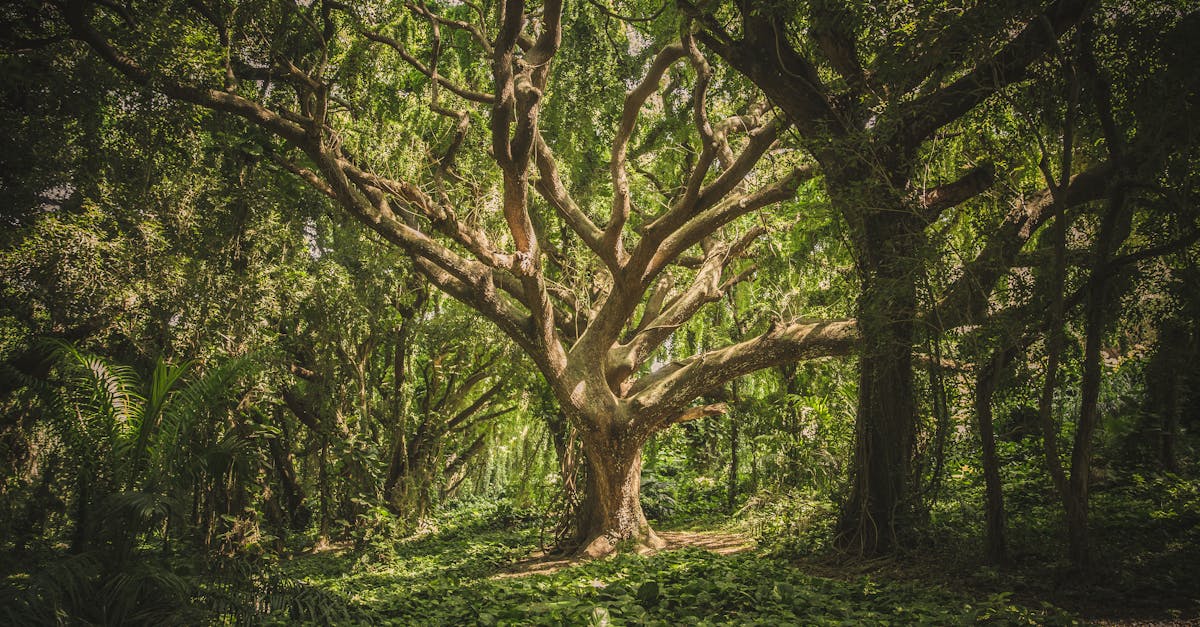
Effects of Stump Decomposition on Soil Health
When a tree is cut down, the remaining stump begins to decompose over time. Stump decomposition can have both positive and negative effects on soil health. As the stump breaks down, it releases nutrients into the soil, enriching it with organic matter. This process can improve soil fertility and promote the growth of new plants in the area. However, the decomposition of a stump can also lead to the depletion of nitrogen in the soil, affecting the overall nutrient balance. Stump grinding comes into play as a solution to accelerate the decomposition process and mitigate potential negative impacts on soil health.
Stump grinding in a timely manner can help speed up the decomposition of the stump, allowing the released nutrients to disperse more evenly in the soil. This can prevent any localized nutrient imbalances and promote healthier soil overall. Additionally, by removing the stump through grinding, you can also create space for new plantings or landscaping projects, further enhancing the health and aesthetics of the area. Understanding the effects of stump decomposition on soil health is crucial in making informed decisions about whether or not grinding a stump is worth the effort.
How Stump Grinding Benefits Soil Nutrients
Stump grinding in a way intricately enhances the nutrient availability in the soil. When a stump is left behind after tree removal, it undergoes decomposition which can consume nutrients present in the soil for several years. This process competes with other plants growing nearby for essential elements required for growth. By grinding the stump, the organic matter is broken down into smaller fragments that can easily decompose and return nutrients back to the soil, promoting healthier growth for other plants in the vicinity.
Additionally, the act of stump grinding helps introduce oxygen into the soil, which is vital for enhancing microbial activity. This increased microbial activity aids in the breakdown of organic matter present in the soil, releasing vital nutrients that are essential for plant growth. As the stump is ground up, it facilitates the integration of these essential nutrients back into the soil, thereby enriching the overall nutrient profile and contributing to improved soil health.
Impact of Stump Grinding on Pest Infestation
Impact of Stump Grinding on Pest Infestation
Stump grinding can significantly impact pest infestation in the surrounding area. When left untreated, stumps can attract various types of pests, including termites, ants, beetles, and other insects that can potentially migrate to nearby structures. By removing the stump through grinding, you eliminate a potential breeding ground and food source for pests, helping to reduce the risk of infestations in your yard or garden. Stump grinding aids in disrupting the ecosystem that pests rely on, ultimately deterring them from setting up colonies and causing damage to the environment.
Stump Grinding in conjunction with proper yard maintenance and pest control measures can work synergistically to create an environment that is less conducive to pest activity. By eliminating stumps, you not only remove a habitat for pests but also prevent the accumulation of organic matter that can attract unwanted insects. This proactive approach can be particularly beneficial in regions prone to specific pests, where stump removal serves as a preventive measure to mitigate infestations before they become a more significant issue.
Preventing Pest Infestation Through Stump Removal
When it comes to preventing pest infestation, stump removal plays a crucial role in maintaining a pest-free environment. Stumps left behind after tree removal serve as breeding grounds for various pests, including termites, ants, beetles, and even rodents. These pests can eventually find their way into nearby structures, causing damage and posing health risks. Stump grinding is an effective method to eradicate these potential pest habitats, reducing the likelihood of infestation and the associated problems that come with it. Stump grinding in a timely manner can significantly diminish the risk of pest invasion and help safeguard the surrounding area from pest-related damages.
By opting for stump removal through grinding, property owners can take proactive measures to prevent pest infestation and promote a healthier outdoor environment. Stump grinding not only eliminates the physical presence of a stump but also disrupts the habitat that pests depend on for shelter and sustenance. This disruption deters pests from establishing colonies and prevents them from spreading to other parts of the property. Stump grinding in a thorough and professional manner ensures that pests are deprived of a conducive environment to thrive and helps in maintaining the overall well-being of the landscape.
Stump Grinding Equipment Overview
Stump grinding is a common method used to remove leftover tree stumps from the ground. The equipment utilized for stump grinding comes in various sizes and types to cater to different stump sizes and locations. Stump grinders are typically equipped with a rotating cutting wheel that grinds the stump into small wood chips. The size of the stump grinding machine needed for a particular project depends on the diameter and depth of the stump. Stump grinding in larger commercial projects often necessitates heavy-duty, industrial-grade machinery, while residential projects may only require a smaller, more maneuverable stump grinder.
Stump grinding equipment is designed to efficiently and effectively remove tree stumps without causing damage to the surrounding landscape. The machinery used for stump grinding is equipped with sharp teeth or blades that grind the stump piece by piece, turning it into mulch or sawdust. Stump grinders are often self-propelled or mounted on a vehicle to facilitate easy maneuverability around the work area. Understanding the different types of stump grinding equipment available can help determine the most suitable option for your specific needs when undertaking stump grinding in residential or commercial settings.
Understanding the Machinery Used for Stump Grinding
Understanding the machinery used for stump grinding is essential to comprehend the process involved in this task. Stump grinding in modern times typically involves the use of a specialized machine known as a stump grinder. This equipment is designed with a rotating cutting disk that grinds away the stump, breaking it down into small wood chips. The grinder is maneuvered over the stump, gradually reducing it to ground level or even lower based on the specific requirements of the job.
Stump grinding in residential and commercial settings often employs self-propelled stump grinders that can navigate through various terrains with ease. These machines typically feature a hydraulic system that controls the grinding disk's movements and depth, allowing operators to achieve precise results efficiently. Additionally, stump grinders come in different sizes and power capacities to accommodate stumps of varying diameters and hardness levels. Understanding the functionality and capabilities of different stump grinding machines is vital for ensuring a successful stump removal process.
FAQS
Is stump grinding beneficial for soil health?
Yes, stump grinding promotes soil health by accelerating the decomposition process of the stump, allowing nutrients to return to the soil more quickly.
How does stump grinding benefit soil nutrients?
Stump grinding helps release essential nutrients trapped in the decaying stump, enriching the soil and promoting healthier plant growth in the area.
Does stump grinding help prevent pest infestation?
Yes, removing a stump through grinding can help prevent pest infestation as it eliminates a potential habitat for pests to thrive and multiply.
What equipment is used for stump grinding?
Stump grinding typically involves using specialized machinery like stump grinders, which are designed to efficiently grind the stump into small wood chips.
Can stump grinding equipment be operated by homeowners?
While some homeowners may attempt to operate stump grinding equipment, it is recommended to hire professionals due to safety concerns and the skill required to operate the machinery effectively.
